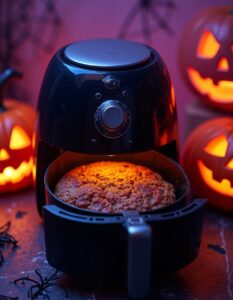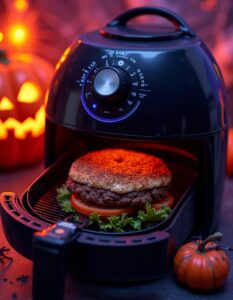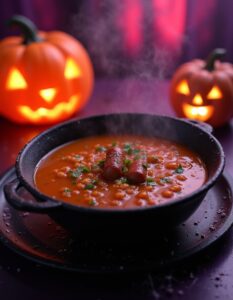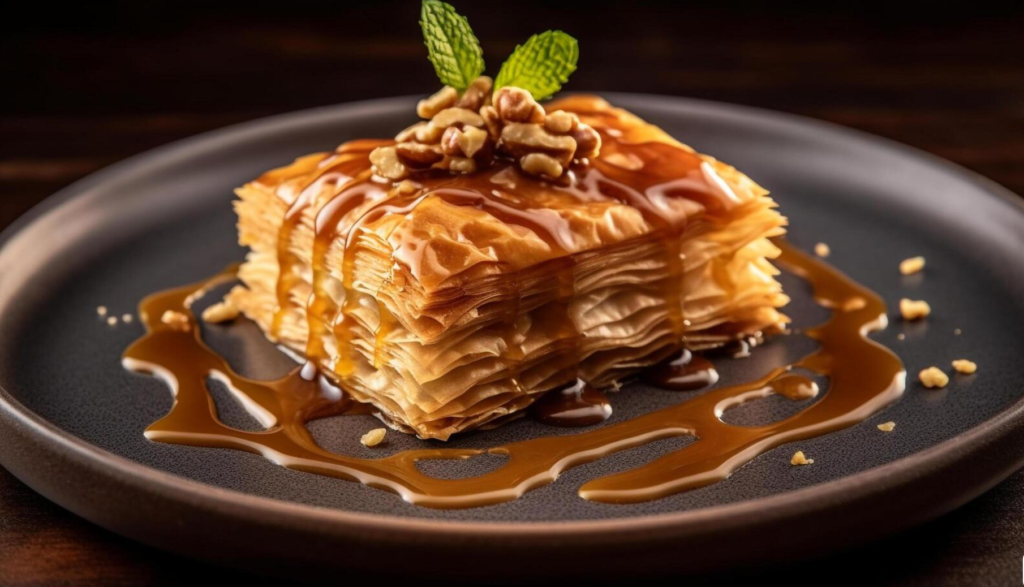
Introduction to Baklava
Baklava is a rich, sweet pastry made of layers of phyllo dough filled with chopped nuts and sweetened with syrup or honey. This delightful dessert is a staple in many Middle Eastern, Greek, and Turkish cuisines. It has gained global popularity for its unique texture and flavor.
For detailed nutritional information on baklava, visit Healthline.
What is Baklava?
Description and Characteristics
Baklava is characterized by its flaky, crisp layers of phyllo dough, rich nut filling, and sweet syrup or honey glaze. It’s often spiced with cinnamon and cloves, adding to its complex flavor profile.
Common Ingredients
- Phyllo dough
- Nuts (usually walnuts, pistachios, or almonds)
- Butter
- Honey or sugar syrup
- Spices (cinnamon, cloves)
Variations in Different Cultures
- Greek Baklava: Typically made with walnuts and honey.
- Turkish Baklava: Often uses pistachios and a simple sugar syrup.
- Middle Eastern Baklava: Can include a variety of nuts and flavored syrups.
Nutritional Breakdown of Baklava
Detailed Calorie Count per Serving
A typical serving of baklava (about 2 inches square) contains approximately:
- Calories: 290-350
- Carbohydrates: 40-45g
- Fats: 15-20g
- Proteins: 4-5g
Macronutrient Composition
- Carbohydrates: Major source of calories due to phyllo dough and syrup.
- Fats: Comes from butter and nuts.
- Proteins: Mainly from nuts.
Micronutrient Content
- Vitamins: B vitamins, vitamin E (from nuts)
- Minerals: Calcium, magnesium, phosphorus, potassium
Factors Affecting Calorie Content
Ingredients Used
- Types of nuts: Pistachios have fewer calories than walnuts.
- Sweeteners: Honey has more calories than simple syrup.
- Butter quantity: More butter increases calorie content.
Serving Size and Portion Control
- Smaller pieces reduce calorie intake.
- Consider sharing larger pieces.
Preparation Methods
- Baking time: Overbaking can lead to higher fat content due to additional butter absorption.
- Butter/oil use: Generous use increases calories.
Health Implications of Consuming Baklava
Positive Aspects
- Nutrient-dense ingredients: Nuts provide healthy fats, vitamins, and minerals.
- Antioxidants: Honey and nuts are rich in antioxidants.
Potential Drawbacks
- High sugar content: Can contribute to weight gain and blood sugar spikes.
- High fat content: Mainly saturated fats from butter.
Comparison with Other Desserts
- Baklava is generally higher in fat and calories compared to fruit-based desserts but can be comparable to other pastries and cakes.
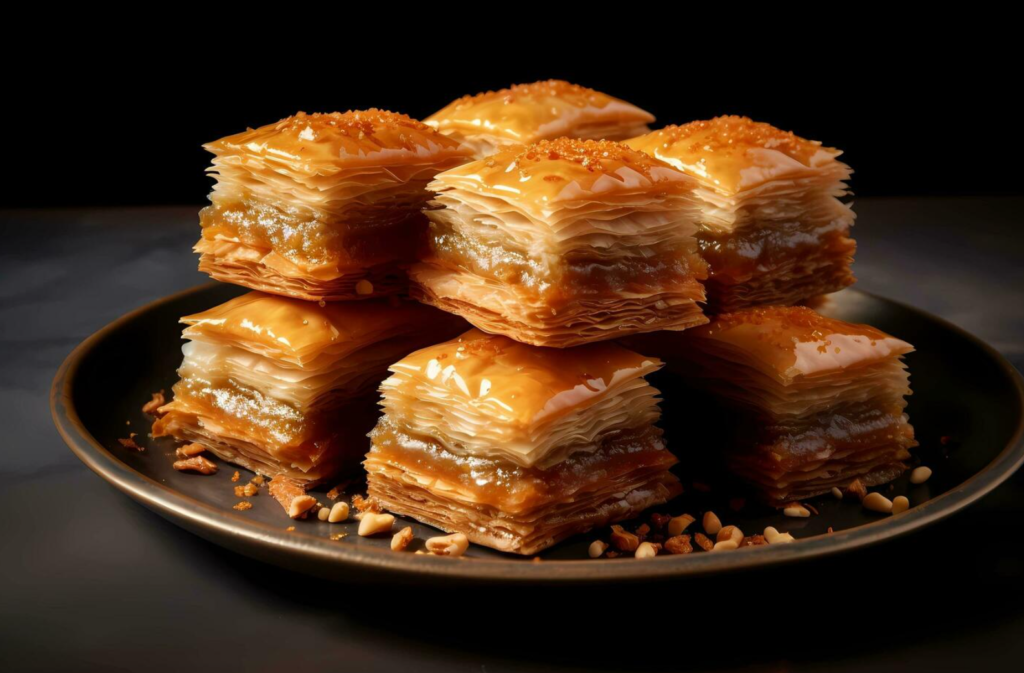
How to Make a Healthier Baklava
Ingredient Substitutions
- Sweeteners: Use agave nectar or reduce the amount of honey.
- Butter: Substitute with a mix of butter and olive oil.
Portion Control Strategies
- Cut smaller pieces.
- Serve with fresh fruit to balance the richness.
Baking Tips
- Use less butter between layers.
- Bake at a slightly lower temperature to reduce the need for extra butter.
Popular Baklava Recipes and Their Calorie Counts
Traditional Greek Baklava
- Calories: Approximately 350 per serving
- Ingredients: Phyllo dough, walnuts, butter, honey
Turkish Baklava
- Calories: Approximately 300 per serving
- Ingredients: Phyllo dough, pistachios, butter, sugar syrup
Modern Variations
- Chocolate Baklava: Adds chocolate, increasing calories to about 400 per serving.
- Vegan Baklava: Uses plant-based butter and agave syrup, around 280 calories per serving.
FAQs about Baklava Calories
How many calories are in a piece of baklava?
A typical piece of baklava contains 290-350 calories.
Can baklava be part of a healthy diet?
Yes, in moderation, especially if made with healthier ingredient substitutions.
What are some low-calorie alternatives to traditional baklava?
Try using fewer layers of phyllo dough, less sweetener, or substituting ingredients like nuts with lower-calorie options.
How does homemade baklava compare to store-bought in terms of calories?
Homemade baklava can be controlled for calorie content, often lower than store-bought versions which may use more butter and sugar.
What is the best way to store baklava to maintain its freshness?
Store baklava in an airtight container at room temperature for up to a week or refrigerate for longer shelf life.
Conclusion
Baklava is a delicious but calorie-dense dessert that can be enjoyed in moderation. Understanding its nutritional content and learning how to make healthier versions can help you enjoy this treat without guilt. Whether you make it at home or buy it from a store, savoring baklava can be a delightful experience.
For tips on making healthier desserts, visit Bon Appétit.
Internal Linking Opportunities
- Healthy Dessert Recipes: Link to a related article on healthy dessert recipes for more ideas on balancing indulgence and nutrition.
- Tips for Baking with Phyllo Dough: Link to a detailed post on baking with phyllo dough to help achieve perfect results with baklava.
- Nutritional Benefits of Nuts: Link to a guide on nutritional benefits of nuts to highlight the health advantages of using nuts in baklava.
- Low-Sugar Dessert Alternatives: Link to an article on low-sugar dessert alternatives for tips on reducing sugar content in desserts.
- Greek Cuisine Recipes: Link to a post on Greek cuisine recipes for more traditional Greek dishes to pair with baklava.



